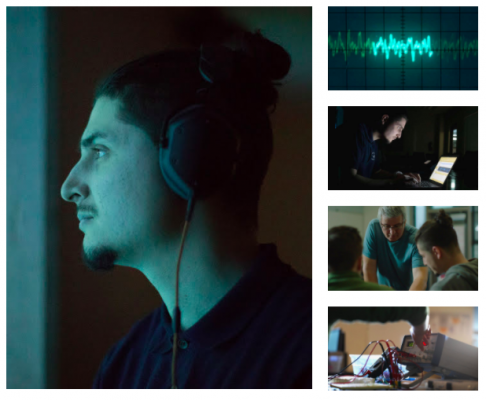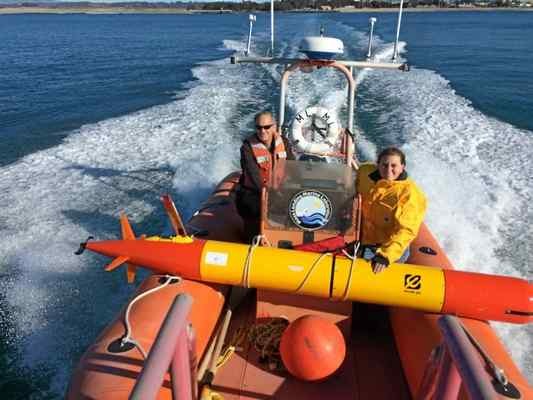Featured
New laser system provides 3D reconstructions of living deep-sea animals and their mucous filters

(Source: MBARI)
June 3, 2020 — Monterey, CA
(Image above: Close up view of a blue, tadpole-like “giant larvacean” and its “inner house”, a mucus filter that the animal uses to collect food. Source: MBARI)
By recording the movement of tiny particles in water, researchers can quantify tiny currents around marine animals as well as water flowing through their filters and transparent bodies
Living in an essentially zero-gravity environment, many deep-sea animals have evolved soft, gelatinous bodies and collect food using elaborate mucous filters. Until now, studying these delicate structures has been virtually impossible. A new study published in the journal Nature describes a unique laser-based system for constructing 3D models of diaphanous marine animals and the mucous structures they secrete.
According to Kakani Katija, MBARI Principal Engineer and the lead author on the new paper, “Mucus is ubiquitous in the ocean, and complex mucous structures are made by animals for feeding, health, and protection. Now that we have a way to visualize these structures deep below the surface we can finally understand how they function and what roles they play in the ocean.”
For this study, the researchers focused on one of the most prolific mucus architects, deep-sea animals called larvaceans. Larvaceans are abundant throughout the world’s ocean basins and range from less than one centimeter to about 10 centimeters in length. So-called “giant” larvaceans create balloon-like mucous webs that can be up to a meter across. Inside these outer filters are smaller, fist-sized inner filters that the animals use to feed on tiny particles and organisms, ranging from less than a micron to a few millimeters in size.
Despite their insubstantial bodies, larvaceans remove vast amounts of carbon-rich food out of the surrounding water. When their mucous filters become clogged the animals release the mucus, which sinks rapidly to the seafloor. This helps the ocean remove carbon dioxide from the atmosphere and carries microplastics from the water column down to the seafloor.
Researchers, like MBARI Senior Scientist and co-author Bruce Robison, have long been interested in how larvaceans can filter a wide variety of particles while processing very large volumes of water (up to 80 liters an hour). Previous studies have looked at smaller larvacean filters in the laboratory, but this is the first study to provide quantitative data about these mucus structures in the open ocean.
Continue reading here: https://www.mbari.org/deep-piv-3d-flow/
###
Tagged Marine Tech, MBARI








